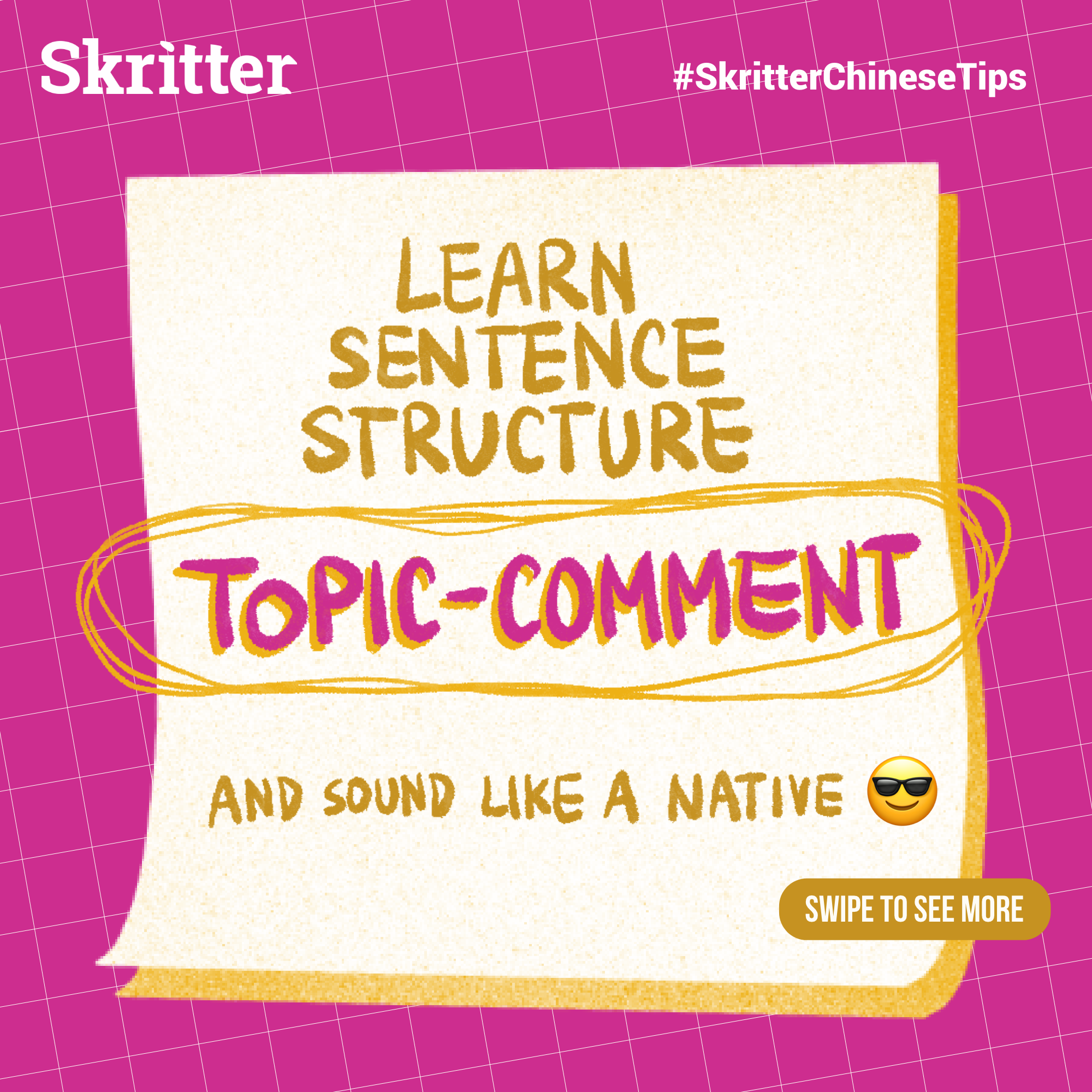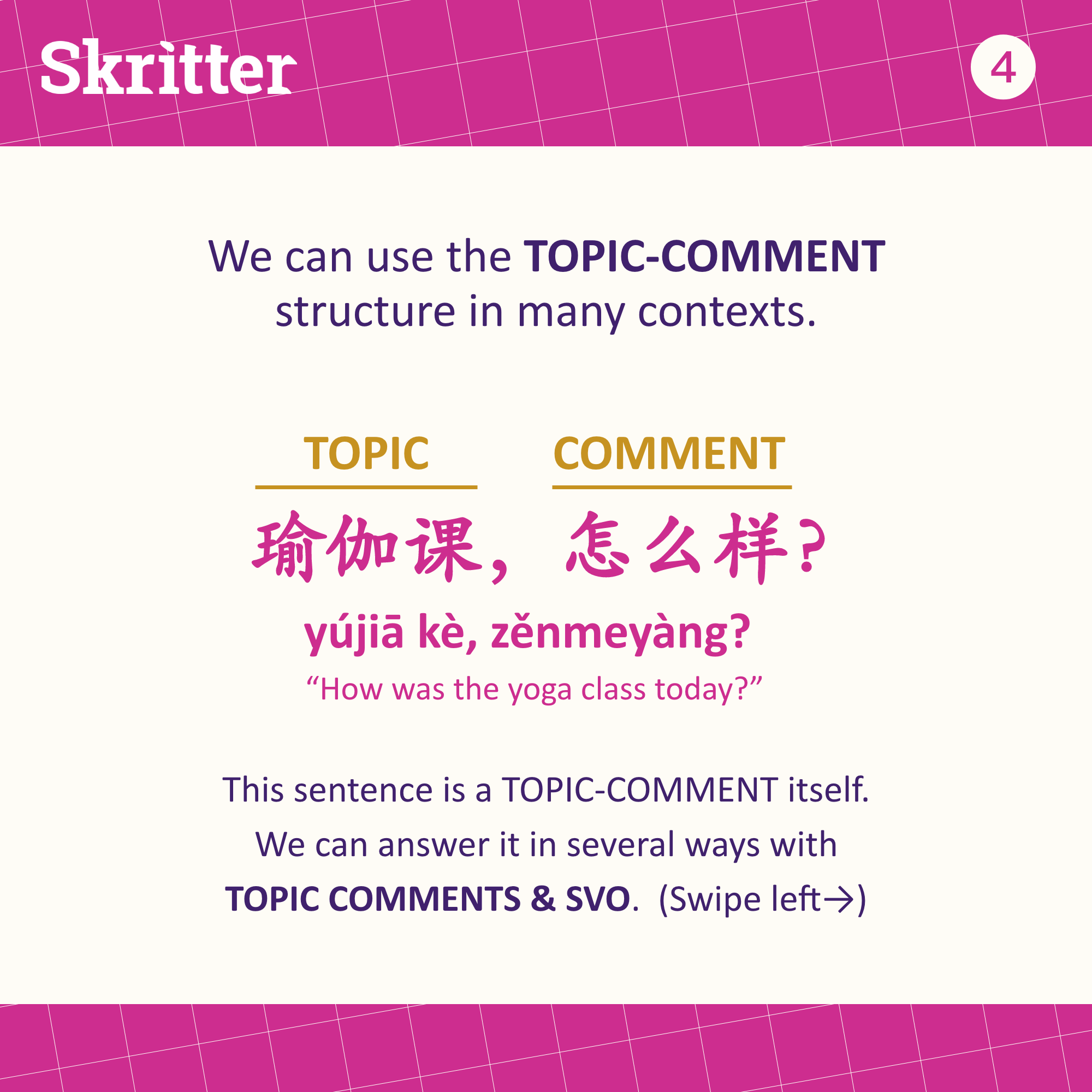The basic sentence structure in Mandarin is SUBJECT-VERB-OBJECT, commonly known as SVO, however, you can also form sentences using the TOPIC-COMMENT structure. Learn how to use this in today’s lesson.
A Typical SVO Sentence:
你 吃 晚饭 了 吗?
S V O comp Q
A Typical Topic Comment Sentence
晚饭,我 吃 了。
TOPIC, COMMENT
The focus here is on the topic “dinner”, so we put it at the start of the sentence. And then we express our comments on the topic, which is that “I’ve had it”.
The TOPIC-COMMENT structure is used in 2 situations:
1.When we want to focus on one particular thing, we start the sentence with it.
2. When the TOPIC of interest is mentioned previously in the context, and the answer is geared toward what is being expressed about the TOPIC.
The question we asked with SVO “你吃晚饭了吗?” is asking about the dinner. It provides the perfect context to use TOPIC-Comment in answering it. It’s like saying: ““Dinner? Yep! I’ve had it.” 晚饭,我吃了。
The second part of the sentence is always our comments on the topic:
瑜伽课有点难。
瑜伽課有點難。
Yújiā kè, yǒu diǎn nán. 😅
Yoga class is a bit challenging.
瑜伽课,我流了很多汗。
瑜伽課,我流了很多汗。
Yújiā kè, wǒ liúle hěn duō hàn. 💦
Yoga class, I sweat a lot = “I sweat a lot in the class.”
瑜伽课,做完好舒服。
瑜伽課,做完好舒服。
Yújiā kè, zuòwán hǎo shūfu.
Yoga class, finished so feels good = “It feels great after doing the class.”
Your Turn! Answer the following questions with Topic-Comment in the comments!
你看过这个电影吗?
你看過這個電影嗎?
Nǐ kànguò zhègè diànyǎng ma?
这杯茶,味道怎么样?
這杯茶,味道怎麼樣?
Zhèbēi chá, wèidào zěnmeyàng?
“How’s the taste of this cup of tea?”










